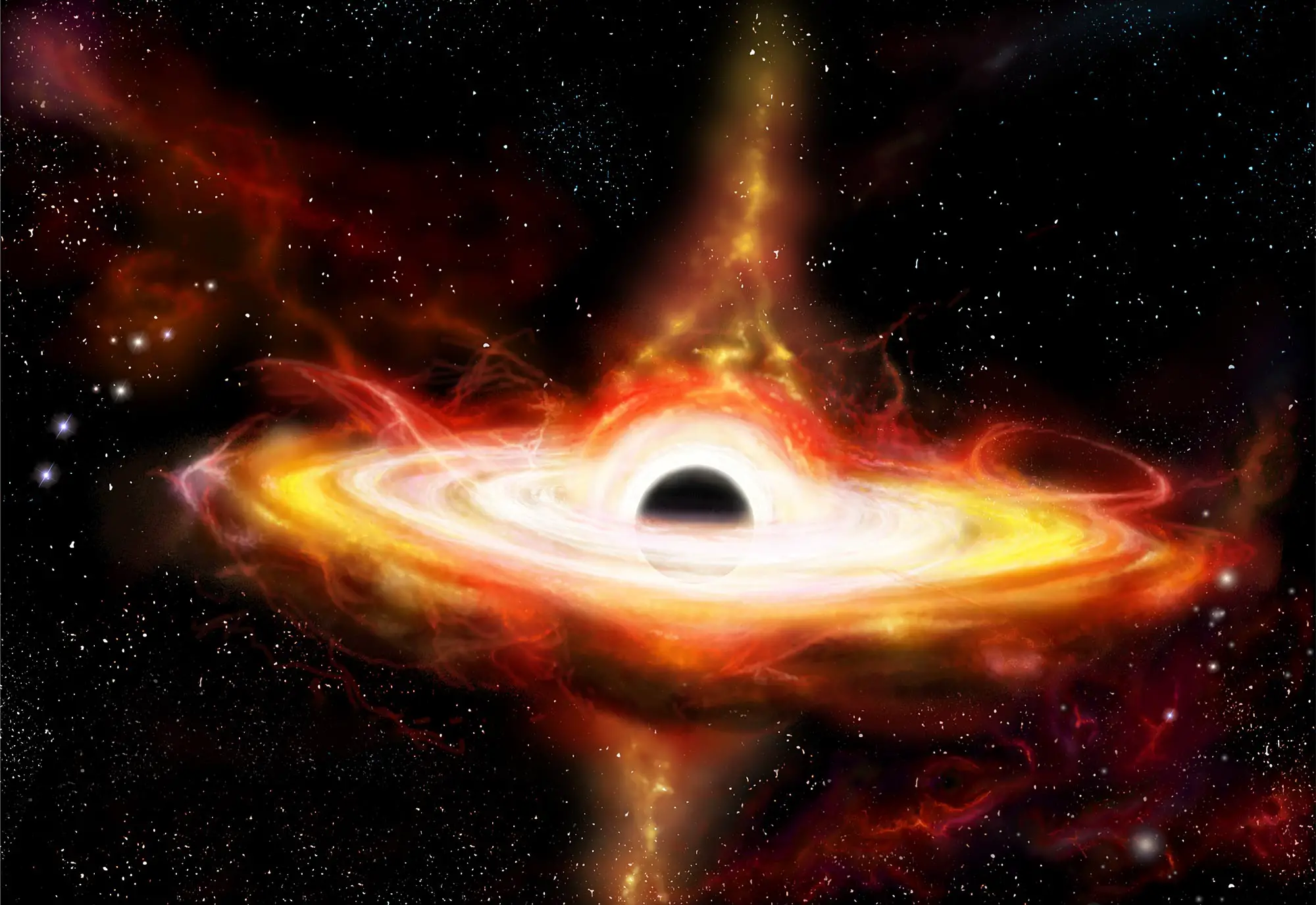Astronomen onder leiding van Durham University hebben een van de grootste zwarte gaten ooit ontdekt, met een massa van meer dan 30 miljard keer die van de zon, door het gebruik van zwaartekrachtlenzen en supercomputersimulaties in de DiRAC HPC-faciliteit. Deze baanbrekende technologie, die licht nabootst dat door het heelal reist, heeft onderzoekers in staat gesteld nauwkeurig het pad van het licht te voorspellen zoals te zien is in echte afbeeldingen van de Hubble-ruimtetelescoop. De ontdekking is gepubliceerd in Maandelijkse mededelingen van de Royal Astronomical Society.
Een team van astronomen heeft een van de grootste zwarte gaten ooit ontdekt, gebruikmakend van een fenomeen dat zwaartekrachtlensing wordt genoemd.
Kromlijnige zwaartekracht van licht
Het team, geleid door Durham University in het Verenigd Koninkrijk, gebruikte zwaartekrachtlenzen – waarbij een sterrenstelsel op de voorgrond het licht van een ver object buigt en vergroot – en supercomputersimulaties in de DiRAC HPC-faciliteit stelden het team in staat nauwkeurig te onderzoeken hoe licht wordt gebogen door een zwart gat. in een melkwegstelsel op honderden kilometers afstand, miljoenen lichtjaren verwijderd van de aarde.
Het team simuleerde licht dat honderdduizenden keren door het universum reisde, waarbij elke simulatie een andere massa omvatte[{” attribute=””>black hole, changing light’s journey to Earth.

An artist’s impression of a black hole, where the black hole’s intense gravitational field distorts the space around it. This warps images of background light, lined up almost directly behind it, into distinct circular rings. This gravitational “lensing” effect offers an observation method to infer the presence of black holes and measure their mass, based on how significant the light bending is. The Hubble Space Telescope targets distant galaxies whose light passes very close to the centers of intervening fore-ground galaxies, which are expected to host supermassive black holes over a billion times the mass of the sun. Credit: ESA/Hubble, Digitized Sky Survey, Nick Risinger (skysurvey.org), N. Bartmann
30 billion times the mass of our Sun
When the researchers included an ultramassive black hole in one of their simulations, the path taken by the light from the faraway galaxy to reach Earth matched the path seen in real images captured by the Hubble Space Telescope.
What the team had found was an ultramassive black hole, an object over 30 billion times the mass of our Sun, in the foreground galaxy – a scale rarely seen by astronomers.
This is the first black hole found using gravitational lensing and the findings were published today (March 29) in the journal Monthly Notices of the Royal Astronomical Society.
Een video die laat zien hoe astronomen zwaartekrachtlenzen gebruikten om een zwart gat te ontdekken met een massa van 30 miljard keer de massa van de zon in een melkwegstelsel op 2 miljard lichtjaar afstand. Krediet: Universiteit van Durham
Terugkijkend in de kosmische tijd
De meeste van de grootste zwarte gaten die we kennen, bevinden zich in een actieve toestand, omdat materie die in de buurt van het zwarte gat wordt getrokken, opwarmt en energie vrijgeeft in de vorm van licht, röntgenstraling en andere straling.
Zwaartekrachtlensing maakt het mogelijk om inactieve zwarte gaten te bestuderen, wat momenteel niet mogelijk is in verre sterrenstelsels. Deze aanpak zou astronomen in staat kunnen stellen om inactieve zwarte gaten te detecteren die zwaarder zijn dan eerder werd gedacht en om te onderzoeken hoe ze zo massief worden.
Het verhaal van deze ontdekking begon in 2004 toen collega-astronoom van Durham University, professor Alastair Edge, een gigantische boog van een zwaartekrachtlens opmerkte bij het bekijken van SGS-beelden.
Fast forward 19 jaar en met behulp van enkele zeer hoge resolutie foto’s van[{” attribute=””>NASA’s Hubble telescope and the DiRAC COSMA8 supercomputer facilities at Durham University, Dr. Nightingale and his team were able to revisit this and explore it further.
Exploring the mysteries of black holes
The team hopes that this is the first step in enabling a deeper exploration of the mysteries of black holes, and that future large-scale telescopes will help astronomers study even more distant black holes to learn more about their size and scale.
Reference: “Abell 1201: detection of an ultramassive black hole in a strong gravitational lens” by J W Nightingale, Russell J Smith, Qiuhan He, Conor M O’Riordan, Jacob A Kegerreis, Aristeidis Amvrosiadis, Alastair C Edge, Amy Etherington, Richard G Hayes, Ash Kelly, John R Lucey and Richard J Massey, 29 March 2023, Monthly Notices of the Royal Astronomical Society.
DOI: 10.1093/mnras/stad587
The research was supported by the UK Space Agency, the Royal Society, the Science and Technology Facilities Council (STFC), part of UK Research and Innovation (UKRI), and the European Research Council.
This work used both the DiRAC Data Intensive Service (CSD3) and the DiRAC Memory Intensive Service (COSMA8), hosted by University of Cambridge and Durham University on behalf of the DiRAC High-Performance Computing facility.

“Amateur-organisator. Wannabe-bierevangelist. Algemene webfan. Gecertificeerde internetninja. Fanatieke lezer.”








More Stories
Vreemde spinnen verspreidden zich in verbazingwekkende foto's in de Inca-stad op Mars
NASA's geavanceerde zonnezeil met succes ingezet in de ruimte: ScienceAlert
NASA-astronauten Butch Wilmore en Sonny Williams arriveren in Florida tijdens de eerste bemande ruimtevlucht van Boeing.